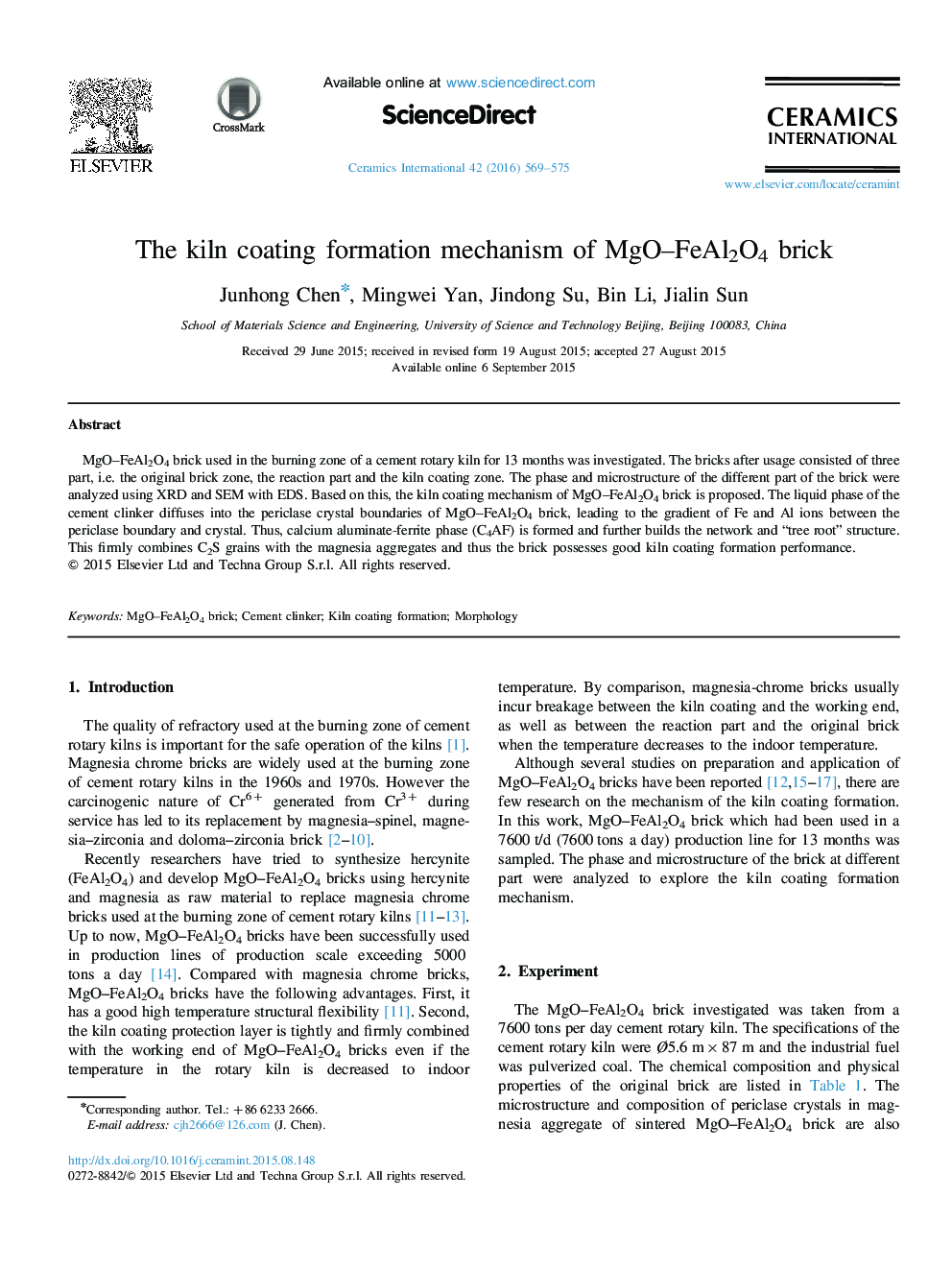| Article ID | Journal | Published Year | Pages | File Type |
|---|---|---|---|---|
| 1459464 | Ceramics International | 2016 | 7 Pages |
MgO–FeAl2O4 brick used in the burning zone of a cement rotary kiln for 13 months was investigated. The bricks after usage consisted of three part, i.e. the original brick zone, the reaction part and the kiln coating zone. The phase and microstructure of the different part of the brick were analyzed using XRD and SEM with EDS. Based on this, the kiln coating mechanism of MgO–FeAl2O4 brick is proposed. The liquid phase of the cement clinker diffuses into the periclase crystal boundaries of MgO–FeAl2O4 brick, leading to the gradient of Fe and Al ions between the periclase boundary and crystal. Thus, calcium aluminate-ferrite phase (C4AF) is formed and further builds the network and “tree root” structure. This firmly combines C2S grains with the magnesia aggregates and thus the brick possesses good kiln coating formation performance.
